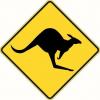I have a Lot more molding planes than I've ever used. I do use molding planes, but when I need one working on an old house, it's not a good time to go to ebay and see if I can find the one I need. I bought a Lot back when they were cheap and plentiful on ebay, and shipping for a small packet from the UK was $7. Most cost less than $25 dollars total, including all my Hollows and Rounds.
I'm sure I have a couple of hundred molding planes. As an investment, I might have broken even on them by now, but they've been worth more than what they cost in the overall scheme of things.
I'm sure I've never used all the hollows and rounds, but when you need one you don't right off know which one you need. You certainly can't plan ahead that in six months I would a need a particular one to reproduce 6 feet of a particularly large Bed Molding.
I also have more bench planes than I use very often. I used my no.8 last Spring, and probably hadn't used it for 8 or 10 years.
I doubt there are many individuals that have more money invested in tools than I do. I do a lot more different jobs than woodworking. Woodworking is just one thing on a long list. Most of the tools I own were bought when I found a good deal on them, and simply bought because I might have a use for them some time in the future.
I don't do videos. I tried, but they slow me up too much from producing work. I get paid to produce work, and it's not fair to the people paying me to slow me up. I rarely ever sell a tool, but I did sell the video camera. I also have never watched a how-to video on woodworking. A couple were started, but I didn't get through the first minute. I don't have the patience. I don't mind watching someone work, but it's like time wasted to watch someone talk.





 Reply With Quote
Reply With Quote

 A good chuckle from that one.... yep.
A good chuckle from that one.... yep.




